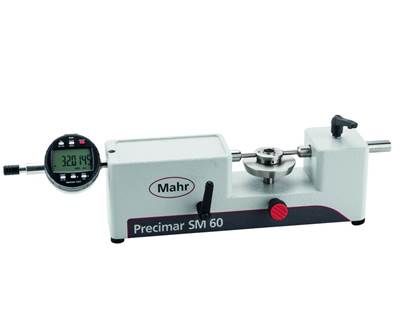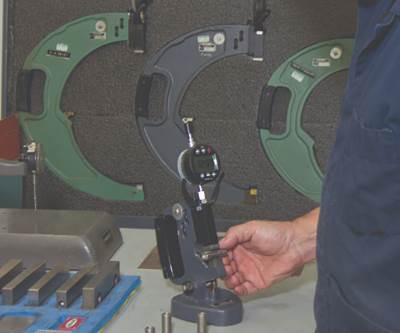Is It a Gaging Display or a Computer?
Sometimes, it’s hard to tell the difference.
Today, more than ever, the amount of information available to the process engineer on the shop floor is staggering. What started 50 years ago with in-process charting and data collection has become a lot of information to keep track of. Almost all gaging types now have a digital version with the ability to send measuring results to something that can collect and manage them. In fact, this has become the de facto method for collecting gaging data: The operator takes a measurement and sees the results on the gage, but “the system” takes the results and puts them into the proper bins.
The proliferation of personal computers and the fact that everyone is now comfortable using them has made the PC available on almost every machine tool, along with in manufacturing, assembly and quality areas. PCs are rarely necessities for standard dimensional measurements, although almost any application can be enhanced through the use of PC-based gaging software. While the use of “gaging computers” cannot serve as a substitute for sound gaging practice, the potential benefits they offer are greater, and the barriers to entry lower than ever before.
Shopfloor gaging computer systems are now handling many of these individual gaging points by integrating all the different gage interface types into one base computer. Now, instead of having a number of standalone air gages and linear variable differential transformer (LVDT)-style bench amplifiers, the gaging computer has the interfaces available to configure all these input types. These interfaces may include modules for air tooling, many types of LVDTs or I/O modules that provide controlling functions.
This is where less becomes more for the gaging process. The computer now provides the user interface and visual indication for the operator to review individual displays and watch the changing tolerance colors and the data being acquired. Thus, the gaging computer has become the display, data collection device, results classifier and overall guide to the measuring process. This is a much more cost-effective solution for dealing with multiple gage input requirements. Plus, as gaging requirements end or change, the system can be simply reconfigured for the next gaging application.
Gaging process automation is another benefit of the gaging system for both the operator and the process engineer. For complex measuring functions — say measuring 20 features on an engine block after a complex machining operation — the gaging computer will provide a guided sequence that leads the operator through the gaging routine. The routine can instruct the operator as to what gage to use and where to place it, as well as provide an indication of the results and what to do if the results are not as they should be. At the same time, the results of the measurements are being stored in the background for continuous review and analysis of the process almost anywhere in the world.
It is fairly easy to see how the centralization of gaging can reduce the cost of the gaging station by reducing the number of standalone signal processing units, and this trend will certainly continue. But what about those other gaging stations that are complicated in their own right and need their own dedicated computer to run and analyze the results?
These gaging stations could be for surface finish, shaft and/or form measurement. It always has been a challenge to integrate these various systems into the guided sequence when each has its own unique operating system. However, advances are being made to affect this integration. PCs now have enough horsepower to run multiple, very complex applications quickly on the same platform. This will eliminate the need to have separate computers running their own special gaging software — one software platform will run multiple systems. This not only reduces the need for more hardware but also provides a common user interface that can easily communicate between various applications: dimensional, shaft or surface finish systems.
The concept is this: There is an overall gaging program running a guided sequence, leading the operator through the gaging routine, collecting the data and analyzing the results. Rather than tell the user to walk over to the surface finish system, do his or her task and transmit the results, there is no separate surface finish station. Instead, the surface finish system is integrated into the same gaging computer system with surface finish software running in the background. The gaging software “calls up” the surface finish program and activates one of its application programs. When the guided sequence calls for a surface check, it links to the software so the operator can make the check, and the results are collected. Then it’s back to the rest of the sequence, using the same style of user interface. This transition is transparent to the operator and it eliminates the cost of multiple computer systems. The operator can do more with less.
With the person on the shop floor taking responsibility for so much today — producing parts, running the machine, programming parts, doing preventive maintenance and making good/bad decisions about the parts — it’s important to make the job as easy and efficient as possible. Giving operators a single-user interface that implements all their gaging and leads them through the measuring routine makes life easy, reduces the potential for error and provides a cost-effective way to monitor the gaging process.
Related Content
Parts and Programs: Setup for Success
Tips for program and work setups that can simplify adjustments and troubleshooting.
Read MoreOrthopedic Event Discusses Manufacturing Strategies
At the seminar, representatives from multiple companies discussed strategies for making orthopedic devices accurately and efficiently.
Read More4 Ways to Establish Machine Accuracy
Understanding all the things that contribute to a machine’s full potential accuracy will inform what to prioritize when fine-tuning the machine.
Read More6 Machine Shop Essentials to Stay Competitive
If you want to streamline production and be competitive in the industry, you will need far more than a standard three-axis CNC mill or two-axis CNC lathe and a few measuring tools.
Read MoreRead Next
Closing the Loop for Better Gaging
Gages and measuring instruments come in different shapes and sizes. Whether it be a snap gage, a bench stand, a surface-finish gage or even a form system, keeping the “measuring loop” as small or as short as possible is important for better gage performance.
Read MoreGetting More with Digital Indicators
Today’s digital indicators are not only replacing dial indicators in some instances, but they are also approaching the performance of bench amplifiers at a fraction of the cost.
Read MoreTaking A Reading on Gages
Are we taking advantage of the vast amounts of dimensional information that a gage or hand tool can produce? Certainly not if the information presented on the gage display reads only “over,” “under” or “good.”
Read More

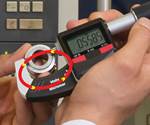
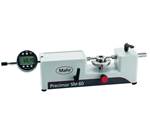
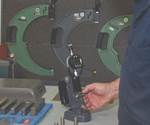











.jpg;maxWidth=300;quality=90)








